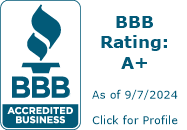Secure your future with Farm Insurance!
Personal Protective Equipment - General PPE
Feb 26, 2025, 4:33 PM

Many serious injuries can be prevented by wearing common personal protective equipment. PPE is available to cover and protect every part of the body. Having PPE and using it correctly is not optional — it is a requirement to use many kinds of equipment and to work with chemicals and other hazardous materials. Contact your supervisor if you do not have appropriate PPE or need replacement of worn or damaged PPE.
Guidelines for PPE that cover specific body areas
- Clothing in general: Avoid loose clothing, hoods, or long-sleeve shirts that could get tangled in equipment. Long aprons can shield against heat or chemical exposure.
- Eye and face protection: Safety glasses must have side shields, and full-face guards may be needed for tasks where small particles or splashing chemicals are a danger. Eye protection is sometimes removed or not used even when necessary because lenses become scratched or dirty. Keep goggles and glasses clean with a soft cloth. Do not attempt to rub or remove an object from your eye that could damage it. Know where eye wash stations are located and how to use them properly.
- Respirators: Follow all rules when using a respirator to obtain the proper level of protection. Use a respirator of the correct size and that is designed for the task, as the wrong type will not provide adequate protection. Anyone who wears a respirator must be fit-tested annually and follow rules for facial hair when using a respirator or mask. For proper protection, always wear the respirator properly, even for a short task.
Key Facts
- Foot protection: For most tasks, sturdy leather shoes or boots are appropriate. However, some jobs working with heavy objects require steel toes. Tennis shoes and open-toe shoes offer little to no protection against heavy weights. Footwear that guards against chemical spills or provides better traction in slick areas might also be required.
- Hand protection: Gloves protect hands from chemical spills, cuts, heat, and cold. Use gloves of the correct thickness, material, and size. Replace damaged gloves, especially gloves that provide protection against chemicals, so they don’t contact skin.
- Head protection: OSHA-approved hard hats must be used where overhead loads can fall, or where people can walk into fixed objects. Hard hats need to fit correctly and discarded if they are cracked or otherwise unusable.
- Hearing protection: Wear hearing protection at all times if you are working in a loud area where protection is required. Like other equipment, earmuffs or other sound blockers must be worn properly to provide the best protection.
Download This Article
Additional Safety Topics
We've Got You Covered!
We offer Farm Lines Insurance in five states: Ohio, Michigan, Illinois, Indiana, and Wisconsin.
Secure your future with Farm Insurance!
Hastings Insurance Company
404 E. Woodlawn Ave.
Hastings, MI 49058
Monday-Friday
8:00 a.m. - 4:30 p.m. (EST)
(800) 442-8277
Terms of Use and Privacy Statement© Hastings Insurance Company. All rights reserved.



